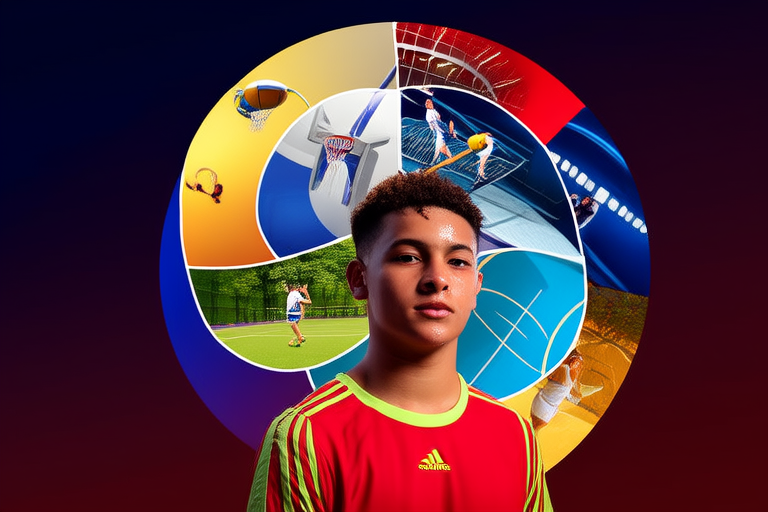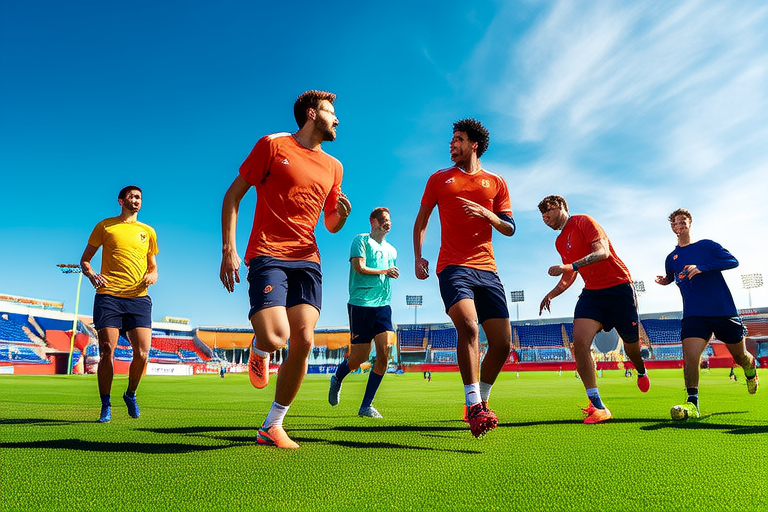Variety of Sports Available Today
Welcome to the world of sports! Whether you’re an athlete or a casual participant, there’s a sport out there that can help you achieve your fitness goals, improve your health, and bring joy to your life. With so many options available, it’s important to understand the different types of sports and how they can benefit you both physically and mentally. This article will introduce you to various categories of sports, providing examples and explaining the advantages of each type. By understanding these differences, you’ll be better equipped to choose the right sport based on your personal interests, fitness goals, and lifestyle.
Team Sports
Team sports involve multiple players working together towards a common goal. These activities promote teamwork, communication, and cooperation among participants. Examples of team sports include soccer, basketball, volleyball, and hockey. Playing team sports can significantly enhance cardiovascular health, improve coordination, and build muscle strength. Additionally, these activities foster social connections and emotional intelligence, making them ideal for individuals who enjoy group dynamics and competition. Engaging in team sports can also boost self-esteem and confidence, as players learn to rely on one another and develop leadership skills.
Individual Sports
Individual sports focus on personal performance rather than collaboration with others. They allow athletes to compete against themselves or other competitors without relying on teammates. Popular individual sports include swimming, tennis, cycling, and running. Participating in individual sports can improve physical fitness, increase stamina, and enhance concentration. These activities also encourage discipline, perseverance, and self-motivation. Moreover, they offer opportunities for personal growth and development, helping individuals set and achieve their own goals. For those who prefer solo endeavors, individual sports can provide a sense of accomplishment and satisfaction.
Indoor Sports
Indoor sports take place within enclosed spaces, offering protection from harsh weather conditions. These activities are particularly beneficial during winter months or when outdoor temperatures are too extreme. Examples of indoor sports include badminton, table tennis, squash, and rock climbing. Indoor sports can improve agility, balance, and hand-eye coordination. They also provide a controlled environment where athletes can practice specific techniques and strategies. Furthermore, engaging in indoor sports can reduce stress levels and improve mental clarity, making them suitable for individuals seeking refuge from the elements or those who prefer structured environments.
Outdoor Sports
Outdoor sports occur in natural settings, exposing participants to fresh air and sunshine. These activities promote physical activity while allowing people to connect with nature. Popular outdoor sports include hiking, kayaking, mountain biking, and trail running. Participating in outdoor sports can strengthen muscles, increase lung capacity, and improve overall endurance. They also offer opportunities for relaxation and mindfulness, helping individuals reduce anxiety and depression. Additionally, outdoor sports encourage exploration and discovery, fostering a deeper appreciation for the environment. For those who love adventure and challenge, outdoor sports can provide endless excitement and thrills.
Contact Sports
Contact sports involve physical interaction between players, often resulting in collisions or close bodily contact. Examples of contact sports include American football, rugby, wrestling, and boxing. While these activities can be dangerous if proper safety measures aren’t followed, they offer numerous benefits. Contact sports can improve cardiovascular health, build muscle mass, and increase bone density. They also teach resilience, determination, and assertiveness, preparing individuals for real-world challenges. However, it’s crucial to prioritize injury prevention by wearing appropriate protective gear and following established rules. For those who enjoy high-intensity competition and physical confrontation, contact sports can provide an exhilarating experience.
Non-Contact Sports
Non-contact sports minimize or eliminate physical interactions between players, focusing instead on skill development and strategic play. Examples of non-contact sports include golf, archery, bowling, and fencing. These activities can enhance hand-eye coordination, fine motor skills, and cognitive function. Non-contact sports also promote mental well-being by reducing stress and promoting relaxation. They offer a lower risk of injury compared to contact sports, making them more accessible to individuals of all ages and fitness levels. For those who prefer less aggressive competition, non-contact sports can provide enjoyable alternatives that still foster personal growth and achievement.
Endurance Sports
Endurance sports require sustained physical effort over extended periods, testing an athlete’s cardiovascular and respiratory systems. Examples of endurance sports include long-distance running, triathlon, cross-country skiing, and marathon swimming. Participating in endurance sports can improve heart health, increase lung capacity, and build muscular endurance. These activities also promote mental toughness and perseverance, teaching individuals to push through fatigue and discomfort. Endurance sports are ideal for those who enjoy setting challenging goals and pushing their limits. For individuals seeking to improve their overall fitness and stamina, endurance sports can provide significant rewards.
Precision Sports
Precision sports emphasize accuracy and control, requiring athletes to perform specific actions with minimal error. Examples of precision sports include billiards, darts, shooting, and synchronized swimming. These activities can enhance hand-eye coordination, spatial awareness, and fine motor skills. Precision sports also promote focus and concentration, helping individuals develop patience and attention to detail. For those who prefer activities that demand technical proficiency and strategic thinking, precision sports can offer a rewarding challenge. Engaging in precision sports can also improve decision-making abilities and problem-solving skills, making them valuable for both physical and intellectual development.
Extreme Sports
Extreme sports push athletes beyond traditional boundaries, combining high speeds, heights, or stunts with an element of danger. Examples of extreme sports include skydiving, bungee jumping, snowboarding, and free diving. While these activities carry inherent risks, they can also provide unparalleled excitement and adrenaline rushes. Extreme sports can improve reflexes, reaction times, and physical agility. They also foster courage, bravery, and risk-taking, encouraging individuals to step outside their comfort zones. For thrill-seekers and adventurers, extreme sports can offer unforgettable experiences and lasting memories. However, it’s essential to approach these activities with caution, ensuring proper training and safety precautions are in place.
Conclusion
The variety of sports available today offers something for everyone, regardless of age, ability, or preference. From team sports that promote camaraderie to individual pursuits that encourage personal growth, each category provides unique benefits. Whether you’re looking to improve your physical health, enhance mental clarity, or simply have fun, there’s a sport out there waiting for you. By considering your personal interests, fitness goals, and lifestyle, you can select the perfect sport to suit your needs. So why not give it a try? Explore different types of sports and discover the one that brings you joy, challenges you, and helps you live a healthier, happier life.










